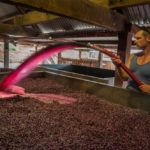After discovering the fantastic taste and surprisingly inexpensive costs of Prosecco, you bought your first bottle, opened it, and found it got flat after you stored it improperly.
Don’t worry, friend. You’re not alone. Prosecco isn’t necessarily challenging to store correctly, but improper storage may rob it of its flavors and overall appeal.
Thankfully, learning how to store your opened or unopened Prosecco is relatively simple.

What Are The Different Types of Prosecco?
Prosecco comes in a few different types, each of which has distinct advantages.
Most people buy sparkling Prosecco because it feels like Champagne on their palate. However, you can purchase semi-sparkling and even non-sparkling varieties.
These options are pretty rare, though. Any non-sparkling Prosecco can be stored like traditional wine without difficulty.
These different types include Spumante (sparkling), Frizzante (semi-sparkling), and Tranquillo (non-sparkling).
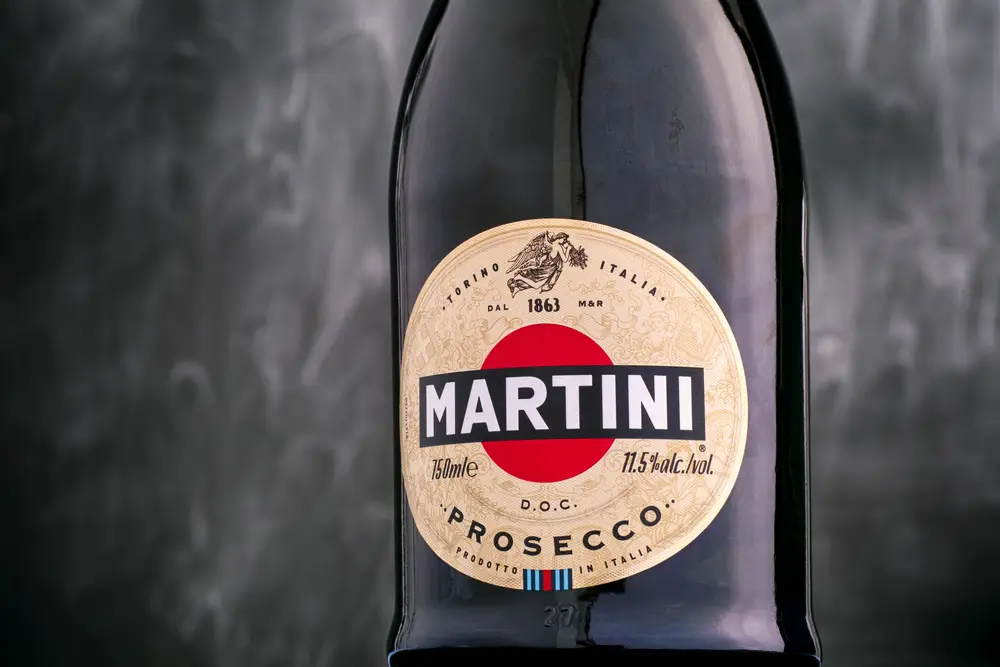
Our storage tips focus specifically on Spumante Prosecco, though you may also store Frizzante in similar ways.
Beyond these differences, Prosecco also comes in different dryness levels. However, these wines remain similar beyond their sugar content, which includes:
- Demi-Sec: This variety is as sweet as Prosecco comes: it contains 32-50 grams of residual sugar per liter. While not precisely sweet per se, it does change this wine’s flavor.
- Dry: Don’t let this name fool you because dry Prosecco still has 17-32 grams of residual sugar per liter. That said, this level is dry compared to the over 200 grams of sugar per liter that is standard in some dessert wines.
- Extra Dry: Extra dry Prosecco has variable sugar content, often between 12-17 grams of residual sugar per liter. This level provides a relatively dry taste that blends well with many foods.
- Brut: Brut Prosecco has between 0-12 grams of residual sugar per liter. They are the driest easily-available Prosecco types, though a drier option is available.
- Extra Brut: Though a reasonably rare variety (usually only available in the highest-quality Prosecco), this wine has between 0-5 grams of residual sugar per liter. It doesn’t get much drier than that.
Does the sugar content of these different wines affect their storage method? Not really, no. Although it does affect the calorie count in Prosecco. Watch out if you’re on a diet.
Sweetness has little to do with the carbonation which causes the wine’s sparkle.
So, the storage ideas mentioned throughout this article apply to all sparkling Prosecco wines, regardless of their sweetness.
Related: Differences between Brut and Extra Dry.
Is Prosecco Sweet or Dry?
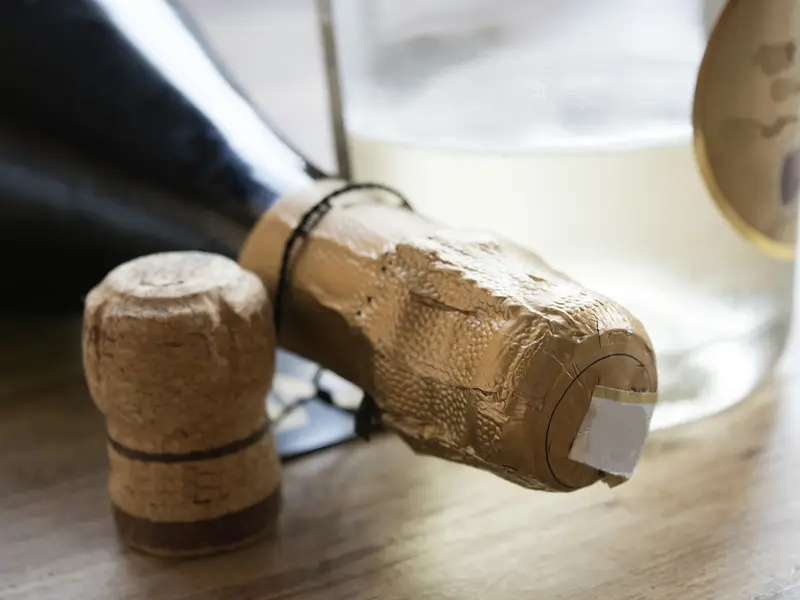
Prosecco is an almost entirely dry wine with a few sweeter options. The most sugar-intense type, demi-sec, is in the middle between dry and soft.
As a result, it is crucial to make sure you pick a type that suits your taste. Otherwise, you may take one sip, find your Prosecco too sweet or too dry, and want to store the wine ASAP.
But how can you do that without causing it to go flat?
How To Store Prosecco Before And After Opening It?
Storing your Prosecco before you open it is, surprisingly, almost as important as properly storing it after you open it.
The next two sections will detail the different methods that you can use to ensure that you keep your wine safely stored without losing its flavor.
Storing Your Prosecco Before Opening

Step One: Find a Cool and Dark Place
Like many wines, a good Prosecco needs to be stored in a cool and dark place before opening.
Light exposure can affect its taste and cause it to lose some of its flavors. A wine fridge may work well, as it can keep your wine between 44-46 degrees Fahrenheit or 6-8 degrees Celsius.
However, a wine cellar with this temperature also works very well.
Step Two: Store Your Wine Upright
Before opening your Prosecco, you must store it upright to ensure that the wine doesn’t touch the cork.
When wine touches the cork, it wets the cork material and can cause it to expand slightly. This expansion may cause air to enter the bottle and decrease the wine’s taste.
As a result, find a spot in your home where you can place your Prosecco standing as upright as possible.
Step Three: Open When Ready
It’s usually best to keep your Prosecco closed until you’re ready to drink a bottle.
Then, for example, you can wait until friends or family visit and share a bottle with them. However, that isn’t always possible, especially if you’re a “wine-a-night” kind of person.
Thankfully, you can safely store your Prosecco after opening it for single glass and keep its taste potent.
Storing Your Prosecco After Opening
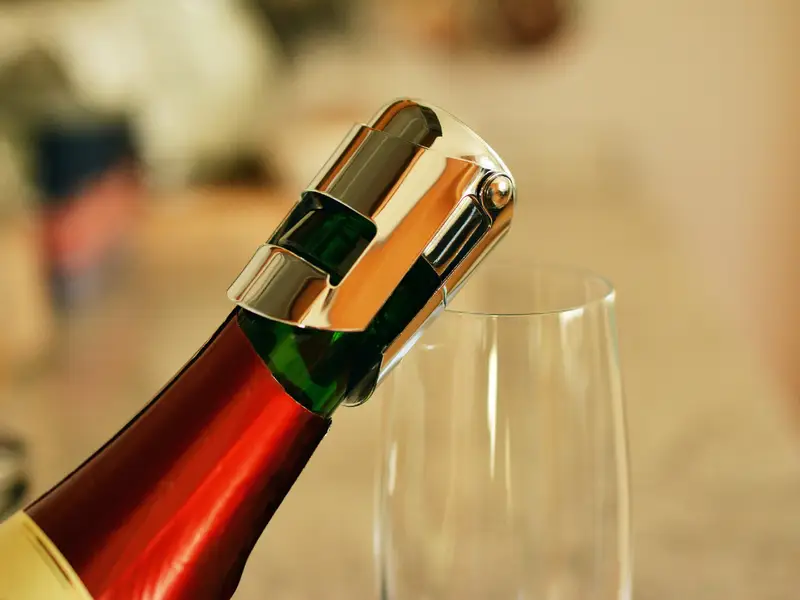
Step One: Add a Wine Stopper
Don’t try to mash your removed cork back into your wine bottle when storing your Prosecco. Instead, put in an air-tight, reusable wine stopper and clamp it down.
This step helps preserve your wine by keeping air out and making it easier to store. Place the cork in as soon as possible, leaving your Prosecco neck open for as little as you can before storing your wine.
Step Two: Refrigerate or Keep Cool
After stopping your wine, please place it in a refrigerator for up to five days after opening.
Colder air stops gas bubble release and keeps your wine as sparkling as possible. You need to add the cork and refrigerate the bottle as soon as you’ve opened it and poured what you need.
If you plan on using it more, place the bottle in a wine bucket filled with ice and water to keep it chilled.
Step Three: Drink Your Wine Quickly
While it is true that your Prosecco can last up to five days in some cases, most wine experts say that opened Prosecco has about three days of true quality life.
So, when you plan on opening a bottle of this wine, make sure you can finish it.
Two glasses a night should be enough, so if you and your partner love wine, you’re likely to go through your bottle more quickly than expected.
How Long Does Prosecco Last Unopened? Does It Go Bad?
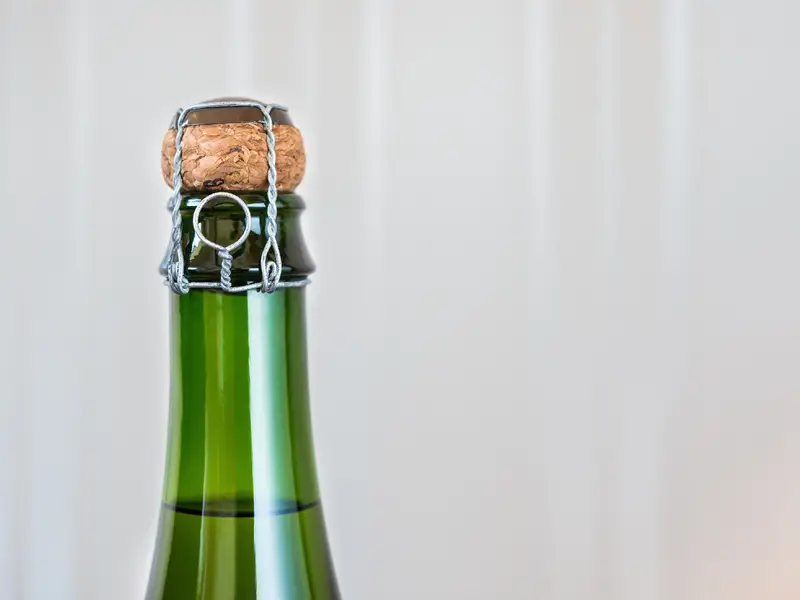
Unopened Prosecco can last at least two years before it starts to lose some of its flavors. Like other alcohols, it isn’t that Prosecco spoils or goes rotten, the way different foods might do.
Instead, it just starts losing its flavor. That’s because the carbonation typically starts disappearing after a few years.
There’s only so much you can do to preserve it. While your flat Prosecco will still have an okay taste, it will lack the sparkle that genuinely makes it worth a try.
You’ll know if your Prosecco is terrible if it has a musty smell and a yellow or brownish color when you pour it out for a drink.
Handy tip: Repurpose old wine instead of throwing it away. There are a number of uses it has!
Does Unopened Prosecco Go Bad When Stored in The Fridge?
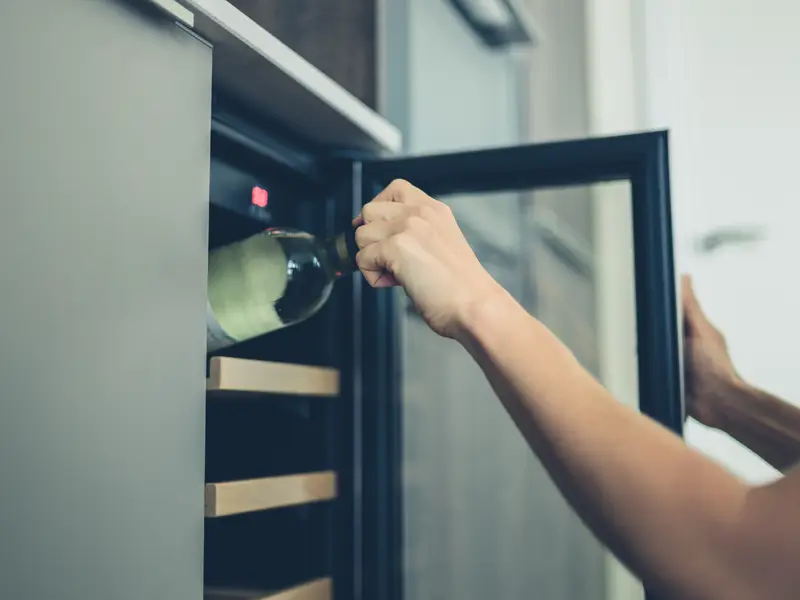
Typically, a refrigerator is not suitable for storing unopened Prosecco, though it works perfectly for opened types.
Unfortunately, the fridge’s vibration, light exposure when opening the door, and looser cork that lets in other food flavors may affect your Prosecco’s quality and taste.
That said, you can store your unopened Prosecco in a fridge for at least a month before noticing a loss in quality.
Though we still strongly suggest a specialized wine fridge with little to no interior light or a wine cellar for Prosecco. Your fridge can do for short-term storage needs.
How Long Does Prosecco Last When Opened?
We’ve hinted at this question’s answer a few times in this article but want to print it here for skimming readers: an opened bottle of Prosecco can last between 3-5 days, as long as you store it in a refrigerator immediately after pouring and use an air-tight wine stopper to prevent air exchange.
While it is true that you could keep your wine longer than that in your fridge, you can expect pretty significant taste changes by even the fifth storage day.
After that, the quality decreases even further. Note that your wine won’t spoil or “go bad” but simply lose its carbonation and much of its appeal.
Tips For Prolonging The Life of Opened Prosecco
There’s not much you can do to keep your Prosecco fresh beyond five days in the fridge. However, you can do a few things to ensure it stays as fresh as possible during that time.
You may also use the last tip here to ensure you finish your bottle more quickly without binging on Prosecco.
Step One: Find a Great Champagne Stopper
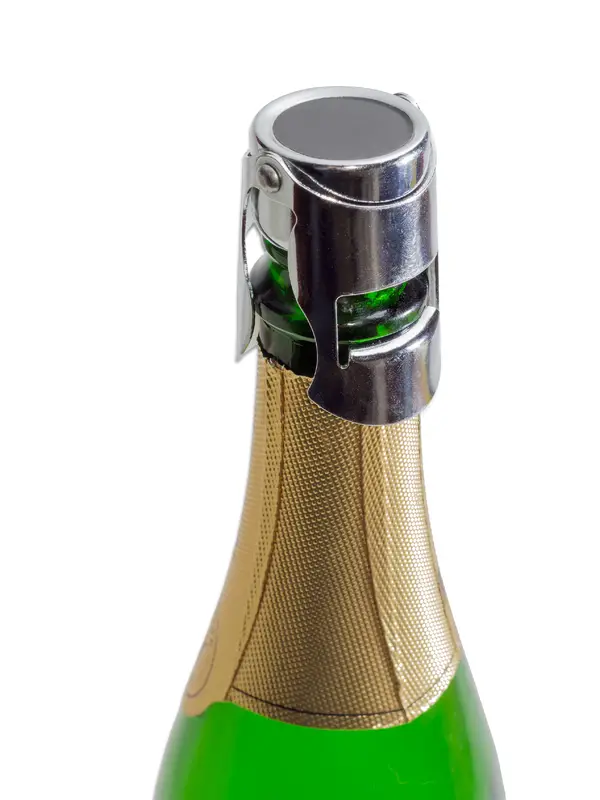
We can’t stress this point enough: when drinking Prosecco, an air-tight Champagne stopper is your best friend.
If you don’t have a plug for some reason, you can use a teaspoon instead. This technique is imperfect and should only be used until you get a real stopper to keep your wine flavorful.
Step Two: Always Seal It Up Right Away
Don’t make the mistake of leaving your bottle open longer than necessary. Always seal it up as soon as possible to keep the wine’s carbonation as long as possible.
Pour all the Prosecco you need for yourself or your friends and then immediately seal it and chill between servings.
Step Three: Use Larger Glasses
This trick might seem silly but can be effective if you go awhile between each serving. If you drink Prosecco from larger glasses, you’ll go through your bottle faster.
That means you’ll typically have to store it for shorter periods, which can ensure you finish a bottle before it goes flat. Even an upgrade from five to seven ounces may work well here.
Places to Store Prosecco
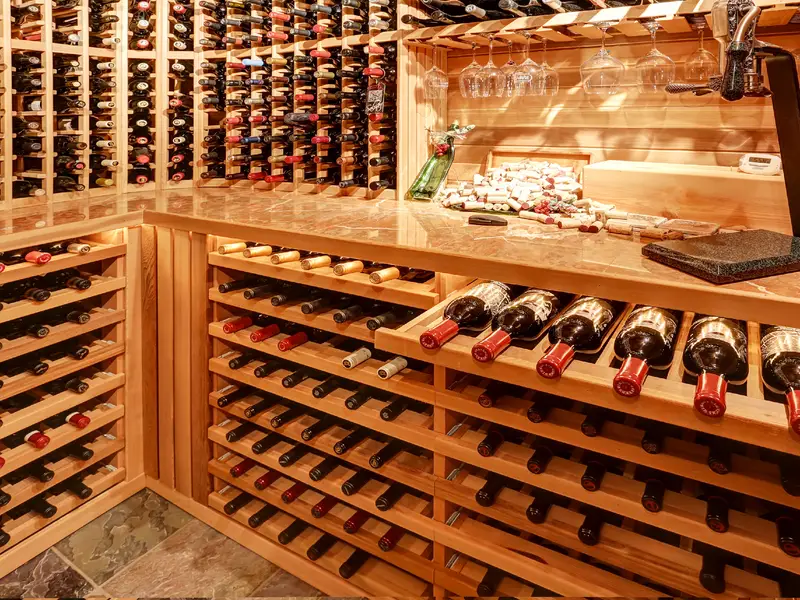
If you buy lots of Prosecco (who could blame you?) and know you’ll be keeping closed bottles around for some time, there are a few places where you can store this wine and get great results.
However, there are also places that you should avoid, which we’ll talk about after this list:
- A cool and dark cupboard in a kitchen or bedroom
- A dark closet with little to no light or humidity
- A basement with minor humidity problems
- A specialized wine cellar with minimal light sources
- A garage or storage shed that you may rarely use
When storing your Prosecco, keep it consistently away from light and humidity to minimize flavor changes.
Storing it on shelves in a bright kitchen or another open room near windows is always a bad idea. Temperature changes may also affect your wine, so keep it chilled when necessary.
Should Prosecco Be Stored on its Side?
You can store Prosecco on its side if you seal it with an air-tight stopper.
Keeping it on its side may be helpful in areas with minimal room. However, storing corked Prosecco on its side may not work because the wine may cause the cork to expand and let in oxygen that ruins the flavor.
The best compromise here is to lane the bottles on their side at an angle so that the cork doesn’t get wet and minimize your storage room needs.
Many wine racks use this method to keep your wine tasty without affecting its overall quality at the same time.
Can Old Prosecco Make You Sick?
While it is true that Prosecco is made with grapes and that spoiled grapes can make you sick, Prosecco doesn’t spoil as you might expect.
Thank the wine’s alcohol for that! Wine makes it very hard and even impossible for most bacteria to grow. There aren’t too many things to worry about if you drink spoiled wine.
However, you might gag a little when taking a sip of flat Prosecco simply because it has lost much of its luster.
Surprise may also cause you to gag, as your tongue will be expecting the vibrant and fresh flavors and aromas of Prosecco and not get them.
What to Do With Leftover Prosecco?
If you have leftover Prosecco that has gone flat and you can’t enjoy it, there are a few ways you can reuse it. Doing so helps to minimize your wine waste and save you money.
You can:
- Baste your meat with it when cooking pork chops or ribs
- Add a little Prosecco to white wine salad dressing for flavoring
- Use your Prosecco in wine cocktails
- Freeze Prosecco to create fun wine ice cubes
- Create a syrup by warming your Prosecco in a pan
- Shrimp Cocktail (and More) Wine Pairing Guide - 09/06/2022
- What Wine Serving Sizes Look Like: Standard Size and More - 08/06/2022
- How Much Sugar is in Wine: Glass and Bottle Sugar Content - 08/06/2022


